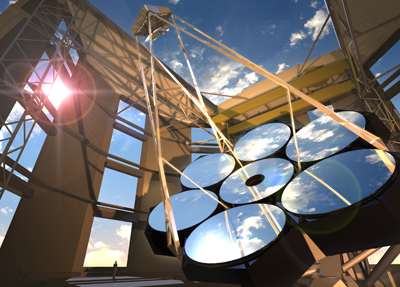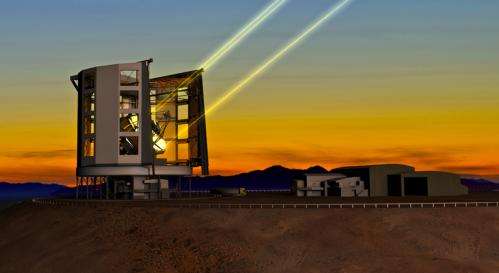The international consortium of the Giant Magellan Telescope (GMT) project has passed two major reviews and is positioned to enter the construction phase. When completed, the 25-meter GMT will have more than six times the collecting area of the largest telescopes today and ten times the resolution of the Hubble Space Telescope. Scientists will explore distant and potentially habitable planets around other stars, the universe in the first billion years after the Big Bang, and the mysteries of dark matter, dark energy and massive black holes.
The Carnegie Institution for Science is a founding partner of the Giant Magellan Telescope Organization (GMTO). During a week-long review in mid-January, an international panel of experts examined the telescope's design, its complex optical systems and precision scientific instruments. The panel concluded that the project meets the technical readiness required to proceed to construction. Immediately following the design review, a team of construction experts scrutinized the project's cost estimate and management plan. Both review panels endorsed the team's cost estimate and their approach to managing construction of the telescope atop a remote mountain peak in the Chilean Andes.
Carnegie president Richard A. Meserve remarked, "This is a major milestone for the project, for astronomy, and for the human quest for knowledge. I congratulate Wendy Freedman, director of the Carnegie Observatories and chair of the GMTO board, for her steadfast commitment to this far-reaching venture."
"These reviews are critical milestones required by the GMTO board to proceed with the construction phase," said Freedman. "I am delighted with the very positive results of the design and the cost reviews. Along with the successful casting of the first three 8.4-meter primary mirrors and the leveling of the mountaintop in Chile, each step brings us closer to construction."
Board members representing the partner research institutions that make up the GMT consortium will meet mid-year to review the construction plan.
Though the project has not formally entered the construction phase, the long timelines required to fabricate some elements of the telescope have required early activity. Production of three of the telescope's seven primary mirror segments is underway; work on the fourth mirror will begin in January of 2015. Early science operations on the GMT are planned to begin in 2020. It will be located at Carnegie's Las Campanas Observatory in Chile where the mountaintop construction site has already been leveled.
More information: www.gmto.org/
Provided by Carnegie Institution for Science





















